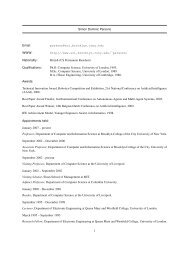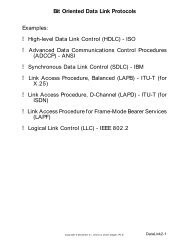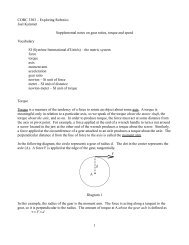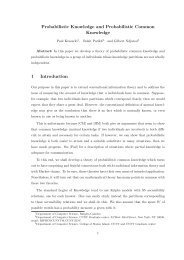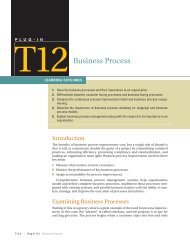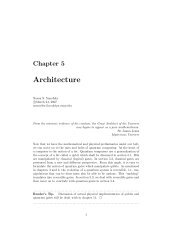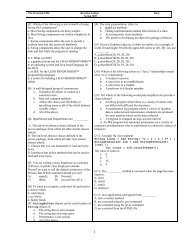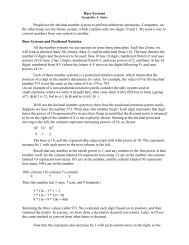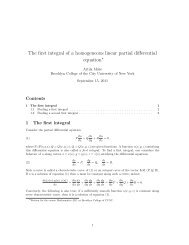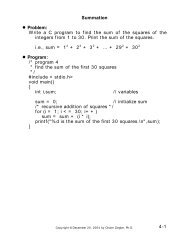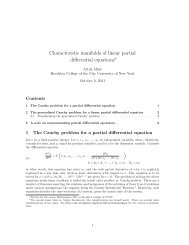*302 Greig and Others v Insole and Others 1977 G. No. 22461977 J ...
*302 Greig and Others v Insole and Others 1977 G. No. 22461977 J ...
*302 Greig and Others v Insole and Others 1977 G. No. 22461977 J ...
You also want an ePaper? Increase the reach of your titles
YUMPU automatically turns print PDFs into web optimized ePapers that Google loves.
[1978] 1 W.L.R. 302 Page 11<br />
[1978] 1 W.L.R. 302 [1978] 3 All E.R. 449 (1978) 122 S.J. 162 [1978] 1 W.L.R. 302 [1978] 3 All E.R. 449 (1978)<br />
122 S.J. 162<br />
(Cite as: [1978] 1 W.L.R. 302)<br />
ternative grounds which I have stated, but also a declaration<br />
that they are or would be an unlawful inducement<br />
to the players involved to break their<br />
contracts with World Series Cricket.<br />
When the trial began, it was, I think, assumed<br />
by all parties to both actions (including the defendants<br />
themselves) that the claims involved <strong>and</strong> the<br />
defences to them would fall to be argued <strong>and</strong> decided<br />
without reference to any statutory legislation.<br />
By the fourth day of the trial, however, a possible<br />
new line of defence had occurred to the defendants'<br />
advisers. On that day they gave notice to the<br />
plaintiffs in both actions that they intended to apply<br />
for leave to amend their defences by pleading that<br />
each of them is an “employers' association” within<br />
the meaning of section 28 (2) of the Trade<br />
Union <strong>and</strong> Labour Relations Act 1974 , <strong>and</strong><br />
relying on section 3 (5) in both actions<br />
<strong>and</strong> also, in the second action, on section 14<br />
of that Act. In due course, in the face of some<br />
adverse comment but no opposition from the<br />
plaintiffs' counsel, the defendants were duly given<br />
such leave. Though I shall have to refer later to the<br />
statutory definition of “employers' association,”<br />
this will be a convenient moment to explain how<br />
the Act of 1974 may be relevant.<br />
*313<br />
Subject to certain immaterial exceptions,<br />
section 14 of the Act provides:<br />
“(1)… no action in tort shall lie in respect of any<br />
act —(a)alleged to have been done … by or on behalf<br />
of an unincorporated employers' association; or<br />
…(c)<br />
alleged to be threatened or to be<br />
intended to be done as mentioned in paragraph (<br />
a<br />
) … above; against the …<br />
association in its own name … or against any members<br />
or officials of the … association on behalf of<br />
themselves <strong>and</strong> all other members of the … association.”<br />
By their alternative plea based on<br />
section 14 of the Act, the defendants in<br />
the second action in effect say that since, first, they<br />
are “employers' associations” <strong>and</strong>, secondly, an action<br />
for inducement of breach of contract is an action<br />
in tort, the claim based on inducement of<br />
breach of contract, however proved <strong>and</strong> justified it<br />
would otherwise be, is not maintainable, because<br />
the defendants enjoy a statutory immunity from this<br />
class of claim. If the defendants are correct in their<br />
assertion that they constitute “employers' associations,”<br />
such immunity must indisputably follow.<br />
Section 3 (5) of the Act confers on unincorporated<br />
“employers' associations” certain further,<br />
far-reaching immunities from the ordinary processes<br />
of the law. So far as material for present purposes,<br />
it provides:<br />
“… nor shall any rule of an unincorporated employers'<br />
association … be unlawful or unenforceable by<br />
reason only that it is in restraint of trade.”<br />
The defendants in both actions assert in effect<br />
that, if contrary to their contention, their new<br />
rules or proposed new rules would otherwise be unlawful<br />
as being in restraint of trade, section 3<br />
(5) operates to render the new rules lawful.<br />
In this instance, however, the plaintiffs in each action<br />
have countered this assertion in argument not<br />
only by a refusal to accept that either of the defendants<br />
is an “employers' association,” but also by a<br />
submission that, in any event, the unlawfulness of<br />
the new or proposed new rules does not arise by<br />
reason only of their being “in restraint of trade”<br />
within the wording of the subsection. They submit<br />
in the alternative that the rules are invalid as denying<br />
the players involved the right to work <strong>and</strong> that<br />
invalidity arising on these particular grounds is not<br />
removed by section 3 (5) , when it is<br />
properly construed.<br />
It is common ground that, if the plaintiffs are to<br />
succeed on any cause of action, they must establish<br />
that all the essential elements necessary to establish<br />
such cause of action were present at the date when<br />
the writs were issued, August 3, <strong>1977</strong>. This point of<br />
date has particular relevance in relation to the<br />
© 2011 Thomson Reuters.



